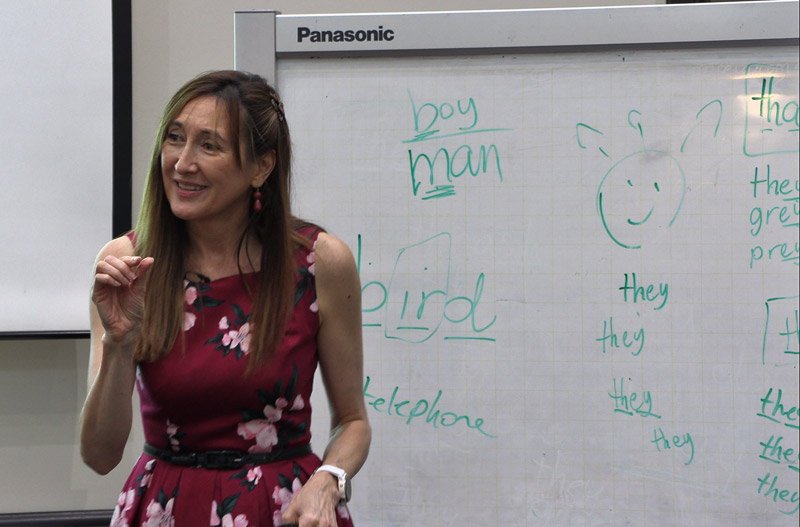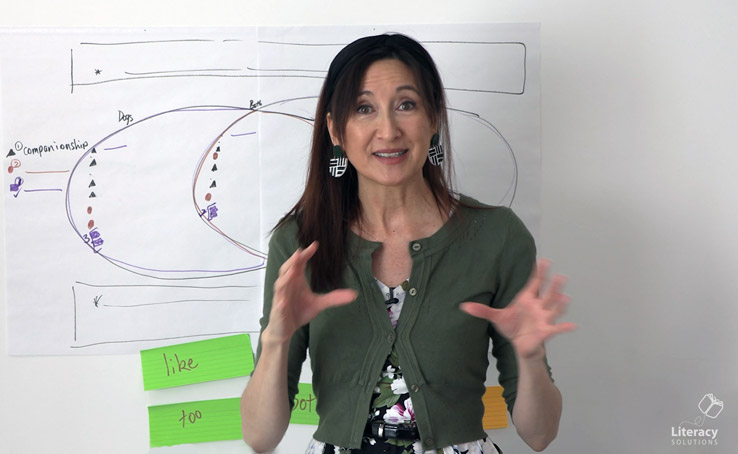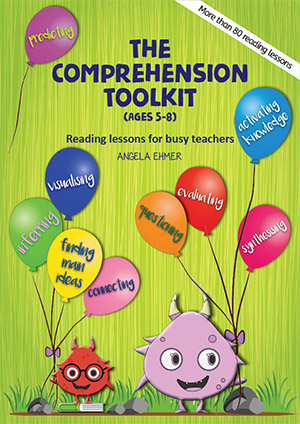The Literacy Block
A literacy block should provide a balanced program of literacy instruction including the following teaching/learning approaches to support reading and writing.
Essential Reading Components:
Modelled Reading
- occurs when an expert reader reads a difficult text to less experienced readers, enabling the experienced reader to model how effective readers sound, solve and think about texts when reading
- The “think aloud” strategy is used strategically by the expert reader to model thinking and problem solving actions.
Reading Aloud
- occurs when an expert reader reads a difficult text to less experienced readers for the purposes of:
- building a community of readers,
- creating shared experiences amongst students,
- exposing students to new ideas, story lines, characters and contexts,
- exposing students to new vocabulary, text and language structures,
- building a love of reading.
Shared Reading
- Shared Reading occurs when an expert reader reads a difficult text and students follow the words with their eyes
- provides opportunities for the experienced reader to explicitly teach or demonstrate a strategy or strategic action
- enables the teacher to use the same text for multiple teaching purposes
- provides opportunities for students to join in with the expert reader to read a hard level text
- involves reading to, with and by students.
Guided Reading
- Guided Reading occurs when a teacher differentiates reading instruction to suit the needs of learners
- enables a teacher to select a text which matches the specific needs of a small group of students
- enables a teacher to support the small group of students to apply problem solving actions in order to solve the text
- provides opportunities for all students to independently problem solve the text
- provides opportunities for a teacher to revisit the text for particular teaching purposes and monitor student progress
Guided Reading/Reciprocal Teaching
- occurs when a small group of students work cooperatively to independently problem solve an instructional level text
- supports students using the framework
- predicting
- reading
- clarifying
- questioning
- summarising
Independent Reading
- is not an instructional approach
- occurs when students independently read easy or familiar texts
- enables students to build stamina and apply problem solving actions with greater efficiency and accuracy
Reading Stamina
- Reading stamina is the ability to read for an extended period of time without requiring adult supervision to maintain attention.
- Reading stamina builds the reader’s capacity to focus attention on the text without trying to concentrate, or feeling they are making a significant effort.
- The ability to re-engage with the text following an interruption or distraction and to get lost in the ideas without thinking about time should result.
Essential Writing Components:
Modelled Writing
- occurs when an expert writer demonstrates the crafting and recording of a text, enabling the experienced writer to model how effective writers formulate ideas, translate ideas to text, construct sentences, apply vocabulary, spelling, punctuation and text type knowledge
- The “think aloud” strategy is used strategically by the expert writer to highlight the thinking and problem solving actions undertaken.
Shared/Joint Construction
- occurs when an expert writer jointly constructs a text with a group of less experienced writers
- the expert records the text which is a collaboration of ideas
- the expert prompts less experienced writers to recall and apply writing knowledge
Guided Writing
- occurs when a teacher differentiates writing instruction to suit the needs of learners
- enables a teacher to work with a small group of students with a common writing need, providing support and scaffolding as required by the group
- provides students with the opportunity to learn writing skills in context and by constructing and recording their own texts
Demand Writing
- occurs when students are engaged in (initially brief) timed writing tasks on a variety of topics and across a range of text types over time
Independent Writing
- is not an instructional approach
- occurs when students independently construct and record texts
- enables students to develop writing stamina and apply writing skills with greater speed and accuracy
The program may also include all some of the following approaches/strategies:
Additional Reading Components:
Literature Circles
- Literature Circles is a small group collaborative approach which supports and scaffolds students to apply comprehension strategies to longer (usually narrative) texts
- enables students to work together in small, mixed ability discussion groups focused around the reading of a text or section of a text
- provides supports for students in the form of “role cards” which prompt students within groups to take on particular roles for the discussion (e.g. summariser, connector, predictor, etc.)
Peer Reading
- occurs when students are paired with a member of their own cohort (same or similar age)
Buddy Reading
- occurs when students are paired across year levels (experienced, older reader with younger, less experienced reader)
Additional Writing Components:
Interactive Writing
- occurs when an expert writer jointly constructs a text with a small group of less experienced writers with a common writing need/s
- the adult and students work together, taking turns to record aspects of the shared text (on a whiteboard, blackboard, butchers’ paper or IWB)
- the expert prompts less experienced writers to recall and apply writing knowledge to record the text
Language Experience
- is a brief, focused oral language mini-lesson around a central theme or idea (shared experience such as an excursion/sports day, a stimulus picture or item, book, etc.)
- the experienced language user uses the shared experience to build vocabulary, language and text structures, topic knowledge, general knowledge, speaking and listening skills
The Aim
The aim of the reading program is to support students to become proficient at using a range of strategies to solve words and to comprehend the text. Word recognition (including high frequency words), translation of letter to sound (letter to sound knowledge), word solving actions, comprehension strategies (including knowledge around text purpose, text types and author intent) and fluency are essential when reading.
The aim of the writing program is to support students to become proficient at using a range of strategies to record and craft/design texts. Handwriting, spelling knowledge, phonic knowledge, phonological knowledge (including phonemic awareness), knowledge of the conventions of grammar and the strategic use of punctuation are essential when recording. Generating ideas, understanding text types and structures (including text purpose and audience), knowledge of authorial techniques and the writing process (pre-writing, drafting, reviewing, revising, editing, proof reading) are required when designing/crafting.
The literacy program should be comprehensive and balanced, supporting students to understand the relationship that exists between oral language, reading and writing. In addition to developing proficient readers, the reading program should support students to become better authors of text, while the writing program should support students to become better readers. Recognising and using knowledge of this reciprocity is important.
How do you implement the literacy block in your classroom? What additional components or strategies have you found effective?





This is exactly what we have been working on at Hilliard this year. I would be interested in continuing the discussion around what this looks like in a variety of classrooms.
MANY THANKS. Nicely balanced useful guide,I’ll use it as a checlist.
This is a vnicely balanced useful guide. I’ll use it as a checklist. Many Thanks
As always, practical, useful advice which is able to be used to organise literacy blocks and as a checklist also for covering all the children across the cohort.
These are the areas I strive to cover in my literacy block but can struggle to timetable it all. I would love to see this broken up into a weekly timetable outlining suggested time allocations for each. Thanks.
A really thoughtful and succint summary. We use these components but have struggled finding weekly literacy planners that effectively document the process. Sonya and Felicity make good points,I’d love some practical suggestions of ways to make it happen in our classrooms!
It is wonderful to view this professional dialogue and I applaud this collegial arena. Greta Martin NSW Primary School Teacher
I agree with the requests for this in a planner. I would love to be able to guide our team to all these components in a step by step/suggested way.
I will be passing this link onto my team, as it comprehensively covers essential Reading and Writing components.
I also have a high focus on building oral language competency in my Prep class. We build vocabulary and practice saying sentences and constantly recycle the linguistic features that are integral to our current Inquiry unit. We plan the curriculum cycle for writing as part of our Inquiry. Connected learning is powerful learning,
I will be using this to pass onto my upper primary learning team. It allows for easy useful guides to be incorporated into literacy models. I thought you summarized it very well. Allows easy language for up students to use in their learning as well.
The website is easy to navigate. I love all the resources!